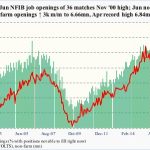“The Fed doesn’t have a clue!” – I allege that not only because the Fed appears to admit as much (more on that in a bit), but also because my own analysis leads to no other conclusion. With Fed communication in what we believe is disarray, we expect the market to continue to cascade lower – think what happened in 2000. What are investors to do, and when will we reach bottom?

To understand what’s unfolding we need to understand how the Fed is looking at the markets, and how the markets are looking at the Fed.
The Fed and the Markets
In our analysis, policies at the Federal Reserve Open Market Committee (FOMC) are driven by what the Fed Chair deems most important. At the risk of oversimplification, and to zoom in on what I believe is relevant in the context of this discussion, former Fed Chair Alan Greenspan put a heavy emphasis on the ‘wealth effect;’ in many speeches, both during and after his tenure at the Fed, he indicated that rising asset prices would be beneficial to investment and economic growth. His successor Ben Bernanke went as far as mentioning in FOMC Minutes rising equity prices as a beneficial side effect of quantitative easing (QE). Bernanke’s framework, though, was indirect: he considered himself a student of the Great Depression, arguing that monetary accommodation shouldn’t be removed too early when faced with a credit bust, as doing so might unleash deflationary forces once again. QE, of course, ‘printed money’ to buy Treasuries and Mortgage Backed Securities (MBS), i.e. intentionally sought to increase their prices (I take the liberty to call QE the printing of money because, amongst others, Bernanke himself has referred to QE as such; no physical money is printed, but it’s created ‘out of thin air’ through accounting entries at the Fed).
This prelude is necessary to understand Janet Yellen, a labor economist. I am not aware of labor economists focusing on equity prices. Neither am I aware that labor economists use forward inflation expectations as a gauge to predict labor markets. Sure enough, any FOMC member is likely to look at various indicators of inflation in the course of their job, but for a labor economist, it may merely be yet another data point. The reason I say this is because, during Bernanke’s tenure, when inflation expectations dipped towards the 2% threshold, he would talk about the need for QE (the chart shows a measure of longer term inflation expectations):

In contrast, Janet Yellen has been rather quiet about the chart, instead pointing to other surveys that show long term inflation expectations remain well anchored. Interestingly, Mr. Draghi at the European Central Bank (ECB) looks at a similar chart of the Eurozone inflation expectations and rings the alarm bell, suggesting policy action may be needed to get those inflation expectations higher once again.














Leave A Comment